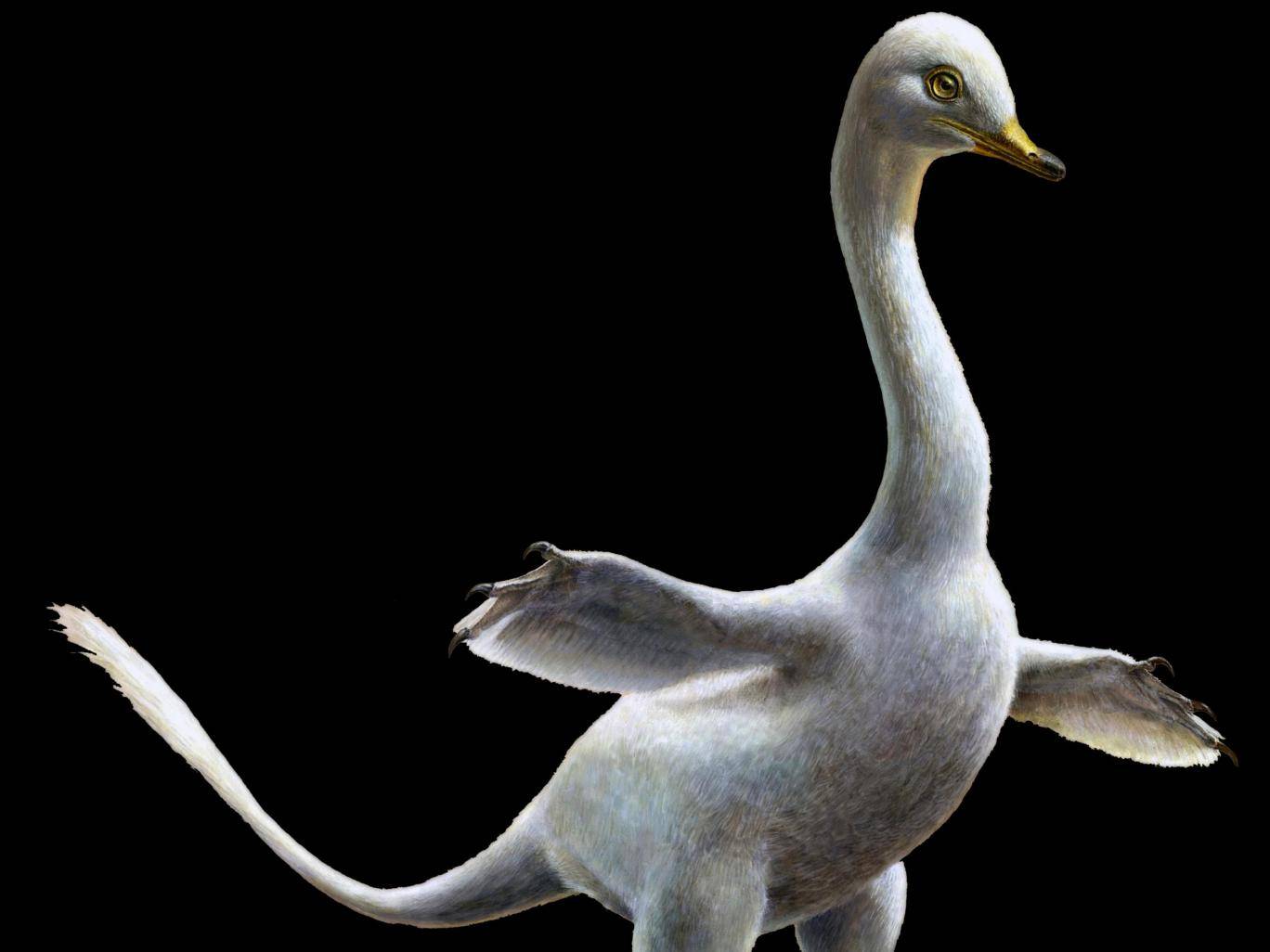Palaeontologists have found a dinosaur with a highly unusual array of features, including flippers, sickle-shaped “killer claws” and a swan-like neck.
Halszkaraptor escuilliei, a relative of the infamous Velociraptor, is thought to have been a semi-aquatic predator that used its flipper-like forelimbs to manoeuvre in the water like a penguin.
The discovery is the first evidence that predatory dinosaurs took to the water in search of prey.
A team of researchers identified the new dinosaur based on a fossilised specimen from the rich fossil beds of Mongolia.

Prior to being handed to palaeontologists, the fossil had resided in private collections having been illegally exported from Mongolia.
Despite the area’s reputation as a rich source of dinosaur discoveries, the combination of unusual traits found in this new species made the palaeontologists suspect it was a fake.
However, detailed scans of the fossil confirmed it was genuine, and suggested an unusual lifestyle for the 75 million-year-old predator.
“We think it’s amphibious,” said Dennis Voeten, a palaeontologist and PhD candidate at the European Synchrotron, where the study was carried out.
The animal was clearly still very capable of walking on land, but the anatomy of its arms suggests they functioned more like flippers.
“The bones are somewhat flattened, and this is something we observe in birds that use their limbs to ‘fly underwater’,” said Mr Voeten.
While the dinosaur would have lacked the capacity for prolonged underwater dives, this adaptation suggests it had the ability to move in the water like modern aquatic birds.
“In addition, in the snout itself we found a plexus – an infrastructure of nerves – that is shared with crocodilians,” said Mr Voeten. This feature is what allows crocodiles to detect prey underwater.
Other aquatic features identified by the research team at the European Synchrotron include a swan-like elongated neck and a large number of teeth, both of which are considered adaptations for catching fast-moving, slippery prey underwater.
“When we look beyond fossil dinosaurs, we find most of Halszkaraptor’s unusual features among aquatic reptiles and swimming birds,” said University of Bologna palaeontologist, Dr Andrea Cau, the lead author of the study introducing the new dinosaur, which is published in the journal Nature.
The researchers emphasise that their investigation would not have been possible without the high-tech scanning capabilities of the European Synchrotron, which allows them to create a 3D reconstruction of the fossil without destroying it.
Halszkaraptor appears to belong to a wider group of predatory dinosaurs, several of which have already been discovered in Mongolia’s Gobi Desert. The new discovery suggests this group evolved lifestyles completely different to other known dinosaur species.
“Thanks to synchrotron tomography, we now demonstrate that raptorial dinosaurs not only ran and flew, but also swam!” said Dr Cau.













